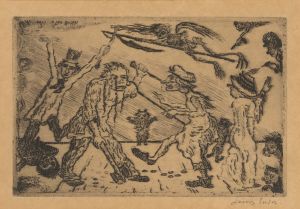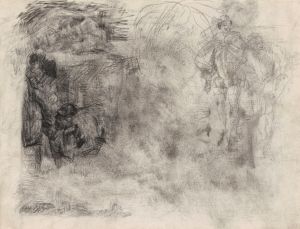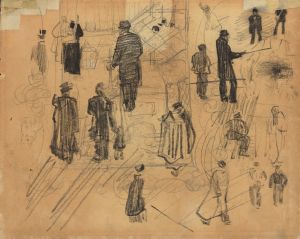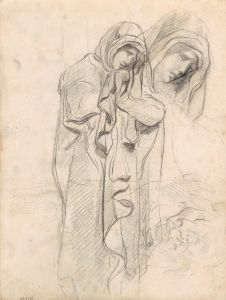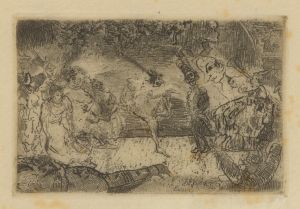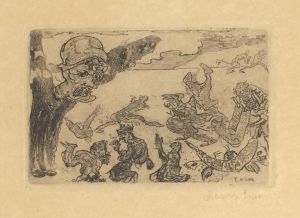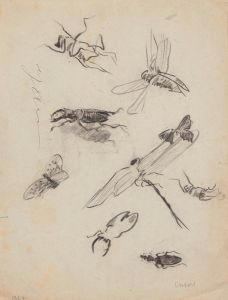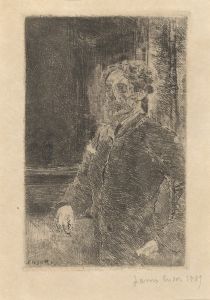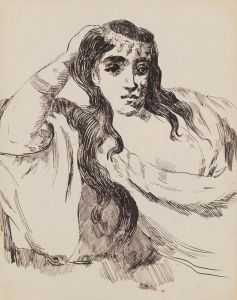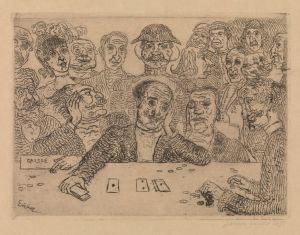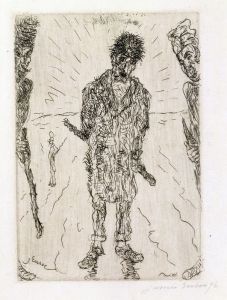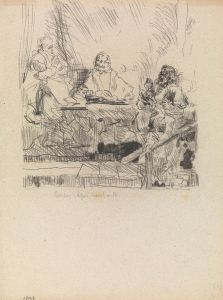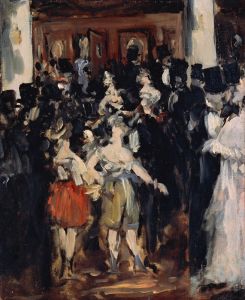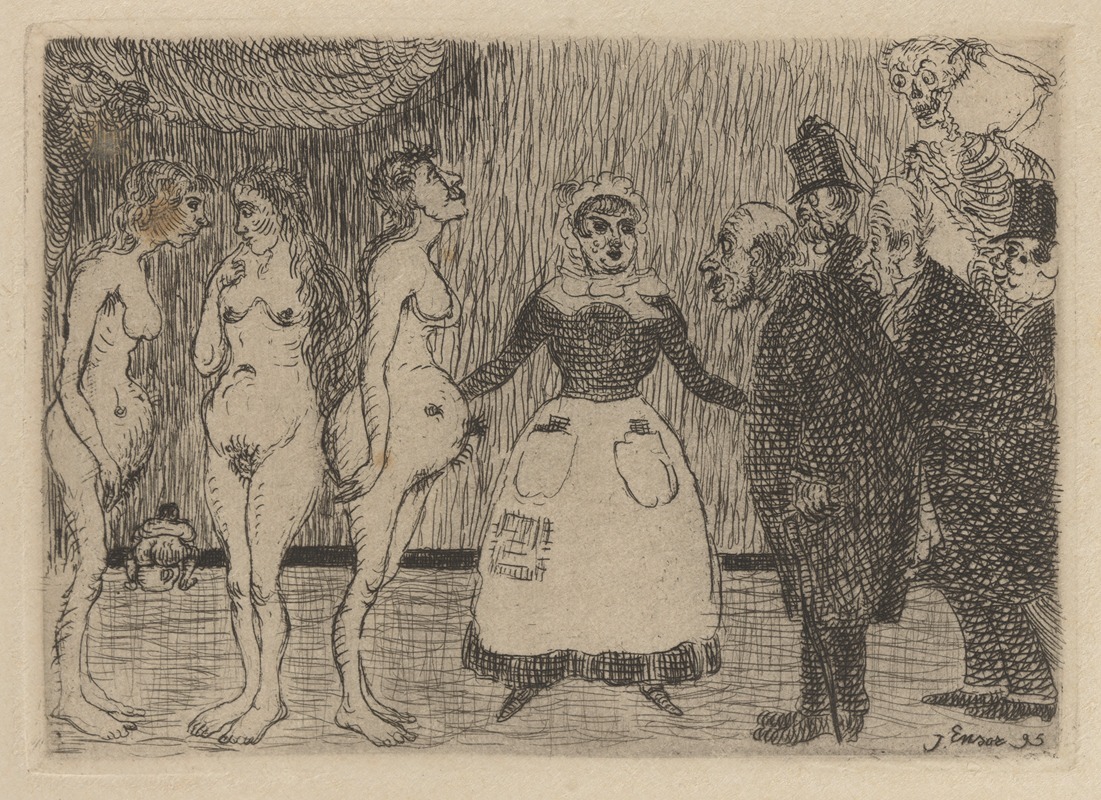
De oude schelmen
A hand-painted replica of James Ensor’s masterpiece De oude schelmen, meticulously crafted by professional artists to capture the true essence of the original. Each piece is created with museum-quality canvas and rare mineral pigments, carefully painted by experienced artists with delicate brushstrokes and rich, layered colors to perfectly recreate the texture of the original artwork. Unlike machine-printed reproductions, this hand-painted version brings the painting to life, infused with the artist’s emotions and skill in every stroke. Whether for personal collection or home decoration, it instantly elevates the artistic atmosphere of any space.
James Ensor, a prominent Belgian painter and printmaker, is known for his unique and often satirical works that explore themes of death, masks, and the absurdity of human existence. One of his notable paintings is "De oude schelmen," which translates to "The Old Scoundrels" in English. This painting is a testament to Ensor's distinctive style and thematic interests.
Ensor was born in 1860 in Ostend, Belgium, and spent most of his life there. His work is often associated with the Symbolist movement, although it also contains elements of Expressionism and Surrealism. Ensor's art is characterized by its vivid use of color, intricate detail, and a penchant for the grotesque and the fantastical.
"De oude schelmen" is a reflection of Ensor's fascination with masks and the theatrical. Masks are a recurring motif in Ensor's work, symbolizing the hidden aspects of human nature and the facades people wear in society. In this painting, Ensor uses masks to explore themes of deception, identity, and the duality of human nature. The figures in the painting are depicted with exaggerated features and expressions, emphasizing the absurdity and folly of their actions.
Ensor's use of color in "De oude schelmen" is particularly striking. He employs a vibrant palette to create a sense of chaos and energy, drawing the viewer into the scene. The bold colors and dynamic composition are typical of Ensor's style, which often blurs the line between reality and fantasy.
The painting also reflects Ensor's interest in social commentary. Through his depiction of the "old scoundrels," Ensor critiques the moral and ethical shortcomings of society. The figures in the painting can be seen as representations of societal corruption and hypocrisy, themes that Ensor frequently explored in his work.
Ensor's artistic influences are diverse, ranging from the Flemish masters to contemporary avant-garde movements. His work is often compared to that of Hieronymus Bosch and Pieter Bruegel the Elder, both of whom also depicted fantastical and grotesque scenes. However, Ensor's unique vision and style set him apart as a pioneering figure in modern art.
Throughout his career, Ensor faced both acclaim and criticism. His unconventional style and subject matter were not always well-received by the art establishment of his time. However, his work has since been recognized for its originality and its influence on later artists, including the Surrealists.
"De oude schelmen" is a prime example of Ensor's ability to blend humor, satire, and social critique with a distinctive artistic style. The painting invites viewers to reflect on the complexities of human nature and the masks we wear in our daily lives. Through his art, Ensor challenges us to confront the absurdities of existence and to question the true nature of reality.
In summary, James Ensor's "De oude schelmen" is a significant work that encapsulates the artist's thematic interests and stylistic innovations. It is a vivid exploration of masks, identity, and societal critique, rendered in Ensor's inimitable style.





